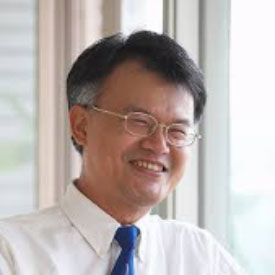2020 Opening Plenary Speaker

Ben Amaba, PhD, PE, CPIM®, LEED® AP
Chief Technology Officer for the Industrial Sector
IBM Data Sciences and Artificial Intelligence Team Elite
The Rapid Democratization and Integration of Data with Simulation, Optimization and Artificial Intelligence
Many CEOs, CTOs, senior executives, and other decision-makers are seeing an advantage from the rise of big data and faster computing power. Data is now a board responsibility. The question arises: How can all this data drive innovation? Being able to harness the power of data through simulation, optimization, artificial intelligence (AI) and machine learning (ML) can help to improve financial, sales, manufacturing and supply-chain operations; enable a better, more intimate customer experience; or reduce downtime if done correctly. Waiting for the perfect environment is no longer a strategy, but an agile learning culture is the priority.
With open source, hybrid clouds, high speed networks, increased computing power, and responsive platforms; simulation, optimization, AI and ML are being democratized and intertwined at a rapid pace. McKinsey estimates that AI could potentially deliver additional economic output of around $13 trillion by 2030, boosting global GDP by about 1.2 percent a year. Advancements in computing power and open source technologies have become a competitive advantage of day-to-day business by fundamentally improving the way the industry operates. Recent progress seeks to radically change our operations and workflows. To enable and maximize the creation of value, the integration and utilization of these data science technologies coupled with a rigorous approach is required. The overhead of data preparation, model governance, bias, trust, and deployment continue to inhibit democratization. The shortage of talent to promote and apply the interdisciplinary computer, mathematical and domain knowledge places many projects in pilot purgatory. The session will explore the future of the Digital Transformation and the use of advanced analytics to create an integrated business model where data becomes more than just a single source of truth, but a strategic asset.
Tuesday Keynote Speaker

Stephen E. Chick
Professor of Technology and Operations Management
INSEAD – Europe Campus
Health Resource Allocation: Lessons for Today from Past Outbreaks
Recent events have brought mathematical modelling of infectious disease transmission and control to the forefront. An appropriate choice of mathematical model depends of course on the decision problem to be informed, yet there can be uncertainties about technical, social, and operational parameters of a model. And each model necessarily makes assumptions, for better or for worse. In this talk, we discuss different types of models for supporting decisions for cost-effective disease management decisions, touching on stochastic models, Bayesian methods, and simulation optimization. We then illustrate some obvious and some not-so-obvious ways that the choice of model is important, by drawing upon examples from the presenter’s experience with projects to address influenza, vaccination, waterborne infections, Creutzfeldt-Jakob Disease and clinical trial design. We highlight the importance of problem selection and collaboration.
MASM Keynote

Chen-Fu Chien, Ph.D.
Tsinghua Chair Professor & Micron Chair Professor
Department of Industrial Engineering & Engineering Management
National Tsing Hua University, Hsinchu 30013, Taiwan
Industry 3.5 as Hybrid Strategy empowered by AI & Big Data Analytics and Collaborative Research with Micron Taiwan for Smart Manufacturing
The paradigm of global manufacturing is shifting as leading nations proposing next phase of industrial revolution for Industry 4.0 by Germany and reemphasizing the importance of advanced manufacturing such as AMP in USA. Driven by Moore’s Law, semiconductor manufacturing is one of the most complex industries for continuous migration of advanced technologies for manufacturing excellence. Micron Technology is a world leading producer of semiconductor memory and computer data storage that has established one of her largest manufacturing bases in Taiwan through a number of acquisitions of local fabs as well as investments of new fabs. Industry 3.5 was proposed as a hybrid strategy between the best practice of the existing Industry 3.0 and to-be Industry 4.0 to address fundamental objectives for smart manufacturing while employing artificial intelligence and big data analytics as means objectives for manufacturing intelligence solutions. This speech will introduce Industry 3.5 and use a number of empirical studies under the existing infrastructure for validation. Furthermore, collaborative research with Micron for smart manufacturing will be used to illustrate our continuous efforts employing artificial intelligence, big data analytics, optimization, and intelligent decision for smart manufacturing and digital transformation. This talk will conclude with discussions of the implications of Industry 3.5 as alternative for Industry 4.0 to empower humanity in the ongoing industrial revolution.
Military Keynote

Dr. Peter Schwartz
Principal Artificial Intelligence Engineer
MITRE Corporation
Combining AI with M&S to Meet Emerging Military Challenges
The U.S. is returning to a state of great power competition. The U.S. military must once again contend with near-peer adversaries that can bring to bear advanced weapon systems that are used in coordination with diplomatic, information, military, and economic (DIME) instruments of national power. In response to these challenges, the U.S. military is turning to new concepts of warfare such as Multi-Domain Operations (MDO) and Joint All-Domain Command and Control (JADC2). These concepts seek to orchestrate capabilities more tightly across domains (land, air, maritime, space, and cyberspace) as a means to converge effects rapidly and dynamically. This approach to warfare can provide U.S. commanders with a greater variety of options while presenting an adversary with multiple simultaneous dilemmas; however, it can also present U.S. commanders and their staffs with a far more complex battlespace and much shorter planning and decision timelines than they have faced in the past.
The U.S. Department of Defense is looking to artificial intelligence (AI) and machine learning (ML) as potential technologies to support the execution of MDO and JADC2. AI and ML are often combined with models and simulations (M&S) to provide enhanced capabilities. This talk will present different configurations that combine AI/ML with M&S and discuss their potential military applications. It will conclude with a presentation of a prototype course of action (COA) analysis tool that has been developed for the Army, including the specific way this tool combines AI with M&S and future work that will enable it to better support MDO and JADC2.




Panel Discussion:
Being a Simulation Professional in this Virtual World
2020 has forced many of us into uncharted waters in terms of how we teach and do business online. This panel will share their experiences working and teaching virtually: challenges and successes, best practices and maybe a few horror stories. Join us for a lively exchange on the advantages and disadvantages of working from home
Panelists:
Carrie Beam, Carrie Beam Consulting and University of Arkansas
Ken Buxton, Accenture Strategy
Traci McIntyre, Kinaxis
Jeff S. Smith, Auburn University
